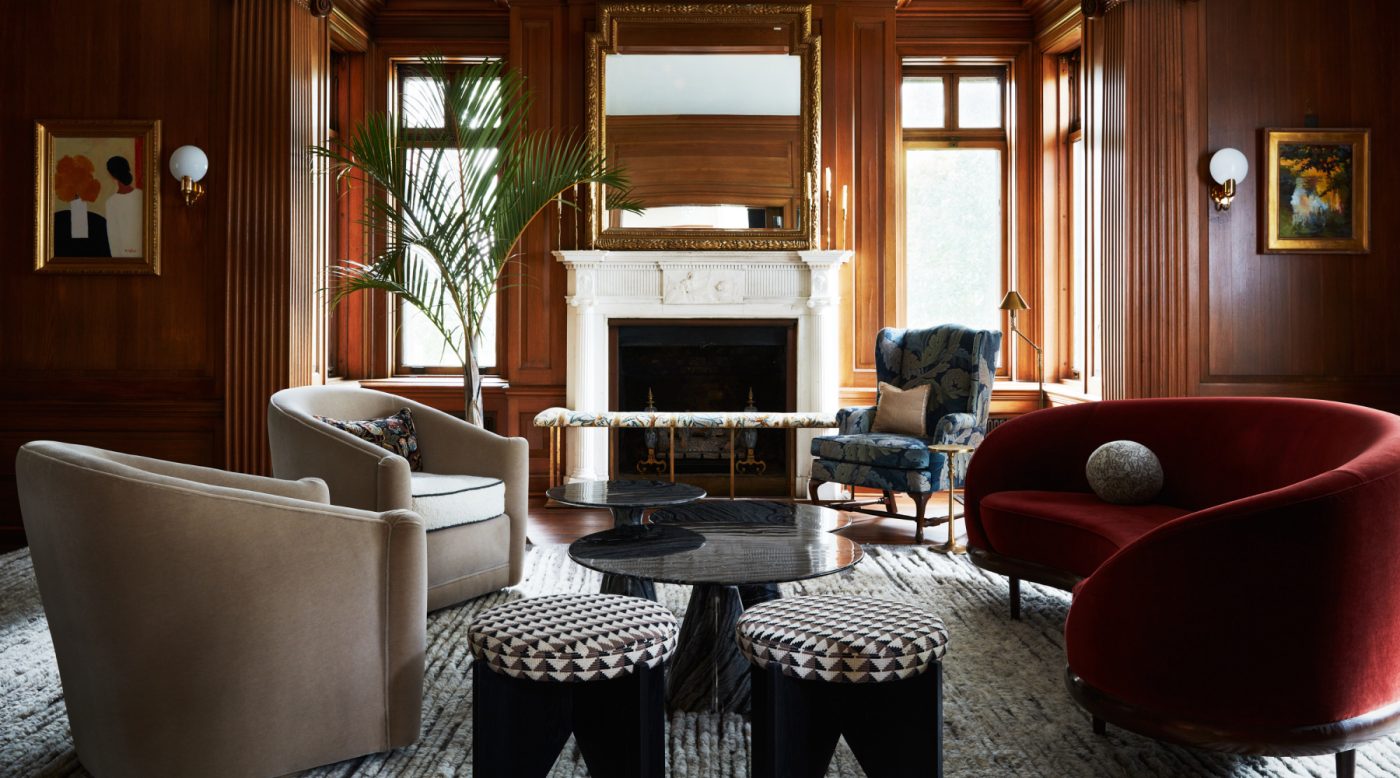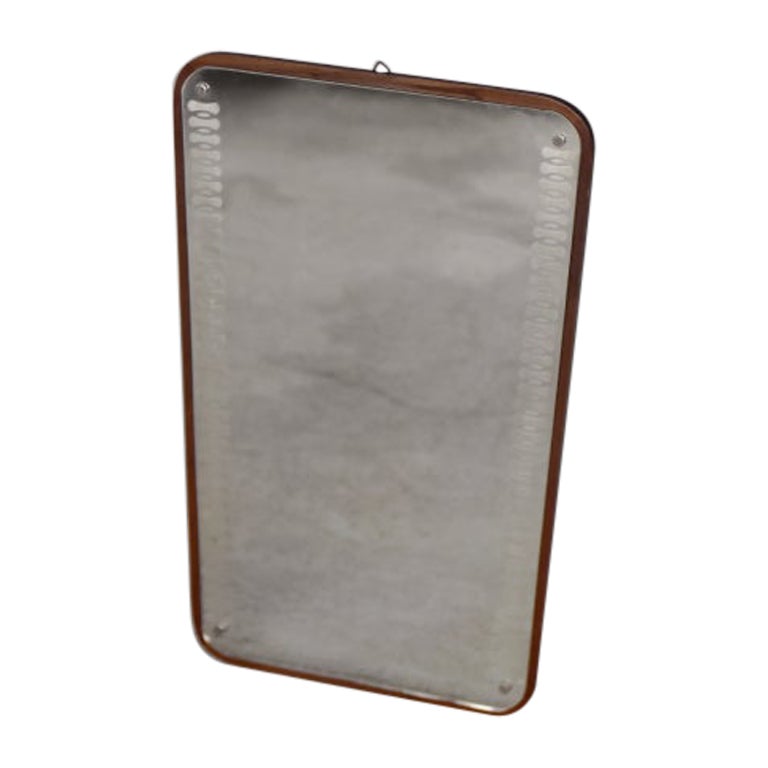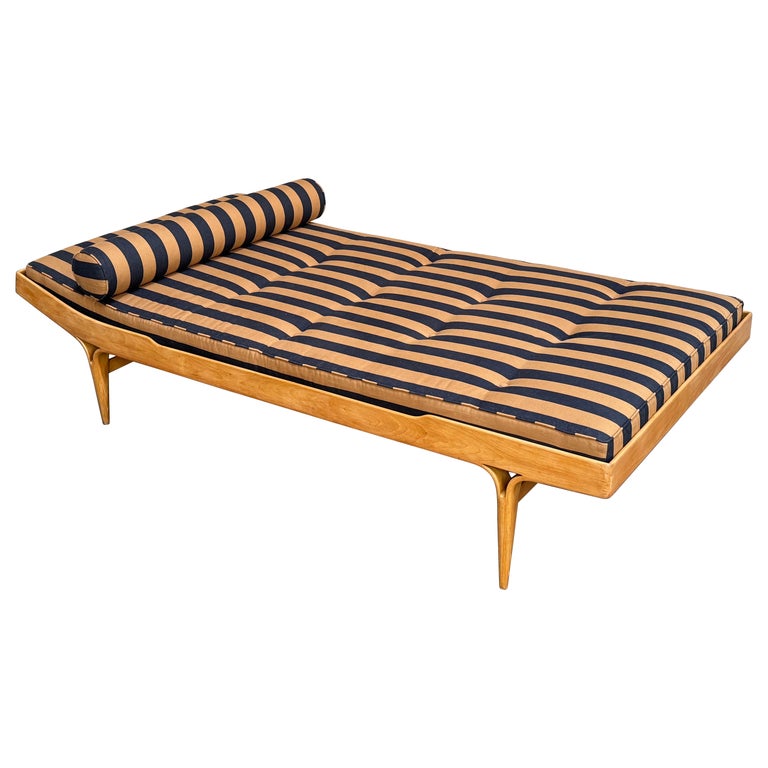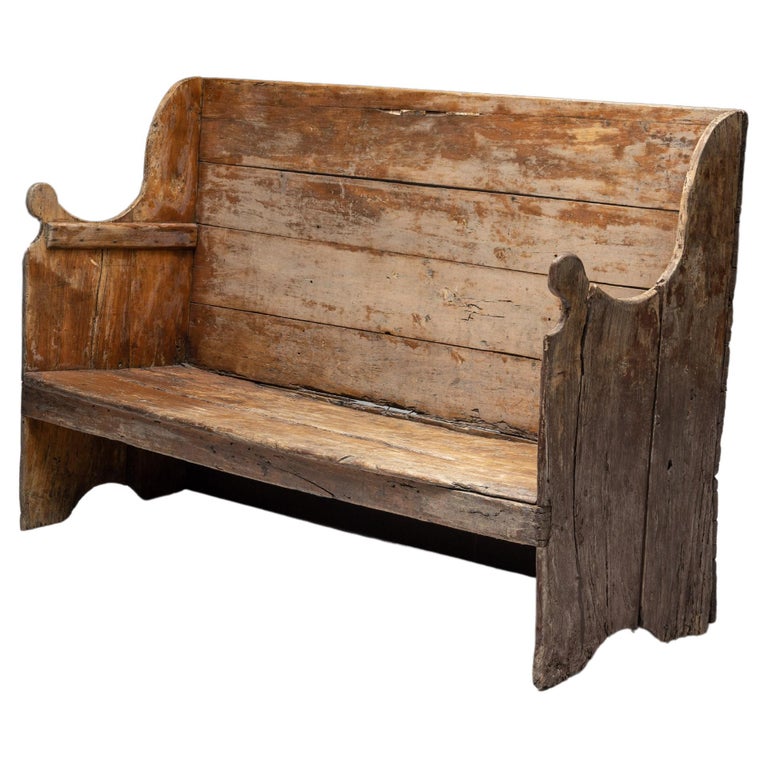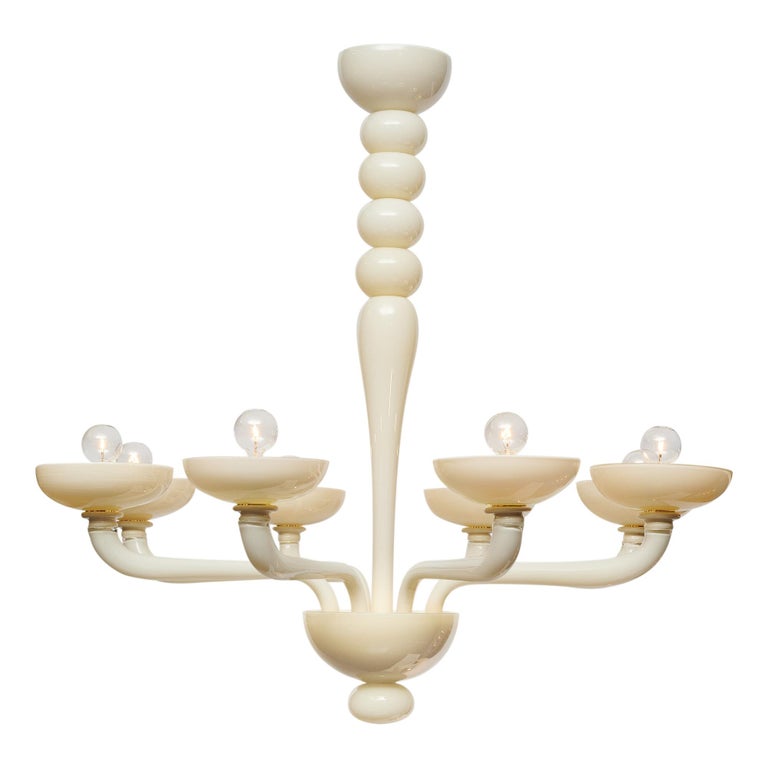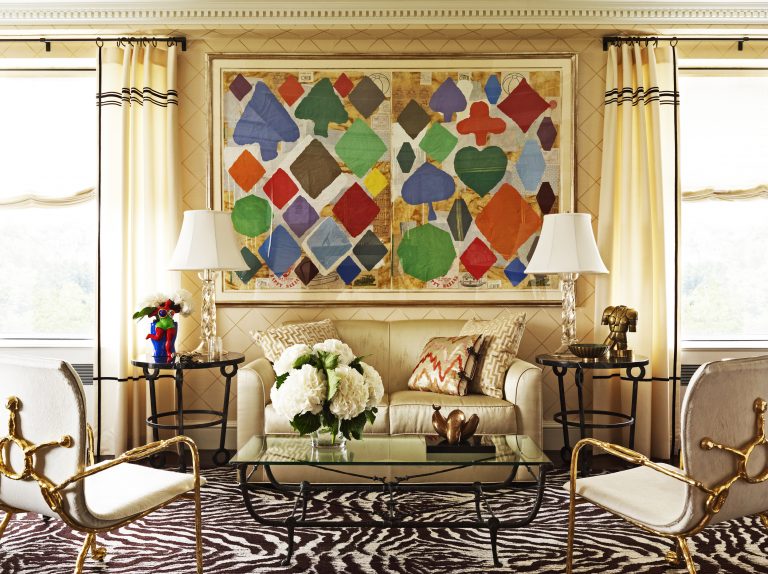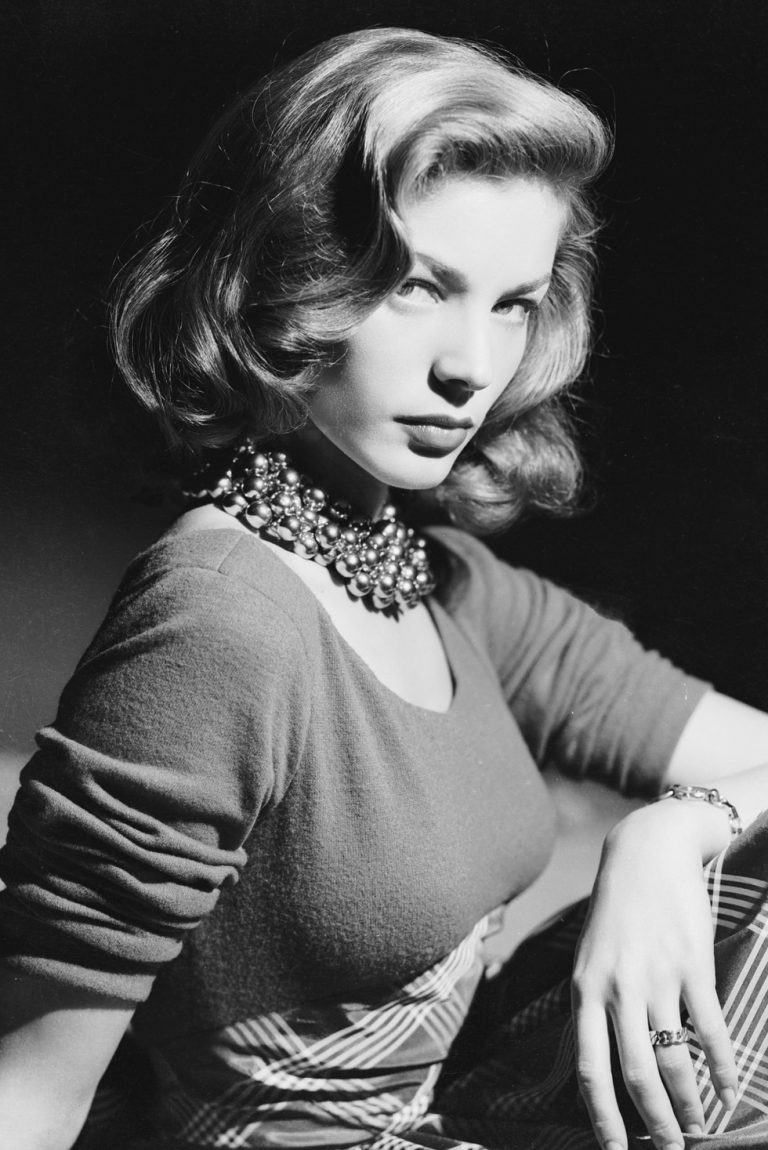June 16, 2024“Houses can have personalities and opinions just as strong as their owners’ and their decorators’,” declares Minneapolis-based interior designer Anne McDonald.
And indeed, when she first visited one recent project — a late 19th-century redbrick mansion on St. Paul, Minnesota’s old-money Summit Avenue — McDonald quickly arrived at her own personality-filled point of view on the house’s character, which she expressed in her witty, no-nonsense Midwestern way.
“This house was a fancy lady,” she recalls of the building, designed in the short-lived Victorian style known as Richardsonian Romanesque, complete with a classical entrance and a three-story tower.

“She wore goopy antique chandeliers, stained diamond patterns on her wood floors and a carpet runner up her stairs. That can be be a little pretentious, and I never want homes of any era to feel stuffy. So, the challenge became: How do we balance the late eighteen hundreds with other periods and styles to make it an approachable, casual home for a modern family, all without dumbing it down?”
This is often the question for McDonald, who, in the six years since launching her namesake firm, has emerged as a decorator highly attuned to the needs of Minneapolitan historic houses and contemporary lifestyles. She is known for creating cozy, user-friendly spaces that please her clients but never cramp her style.

The designer says she “has a real thing for sexy leather Italian nineteen-seventies furniture,” like Mario Bellini’s compelling designs. She equally admires the primitive style of Tramp art, Charlotte Perriand’s pared-down rustic furniture and Rose Tarlow’s designs, which, she explains, “have an elegant softness that’s approachable and feels like it’s been around for a while.”
McDonald also takes inspiration from decorators who “leave space for the architecture and lean in to color,” including such Los Angeles designers as Jane Hallworth and Pamela Shamshiri.
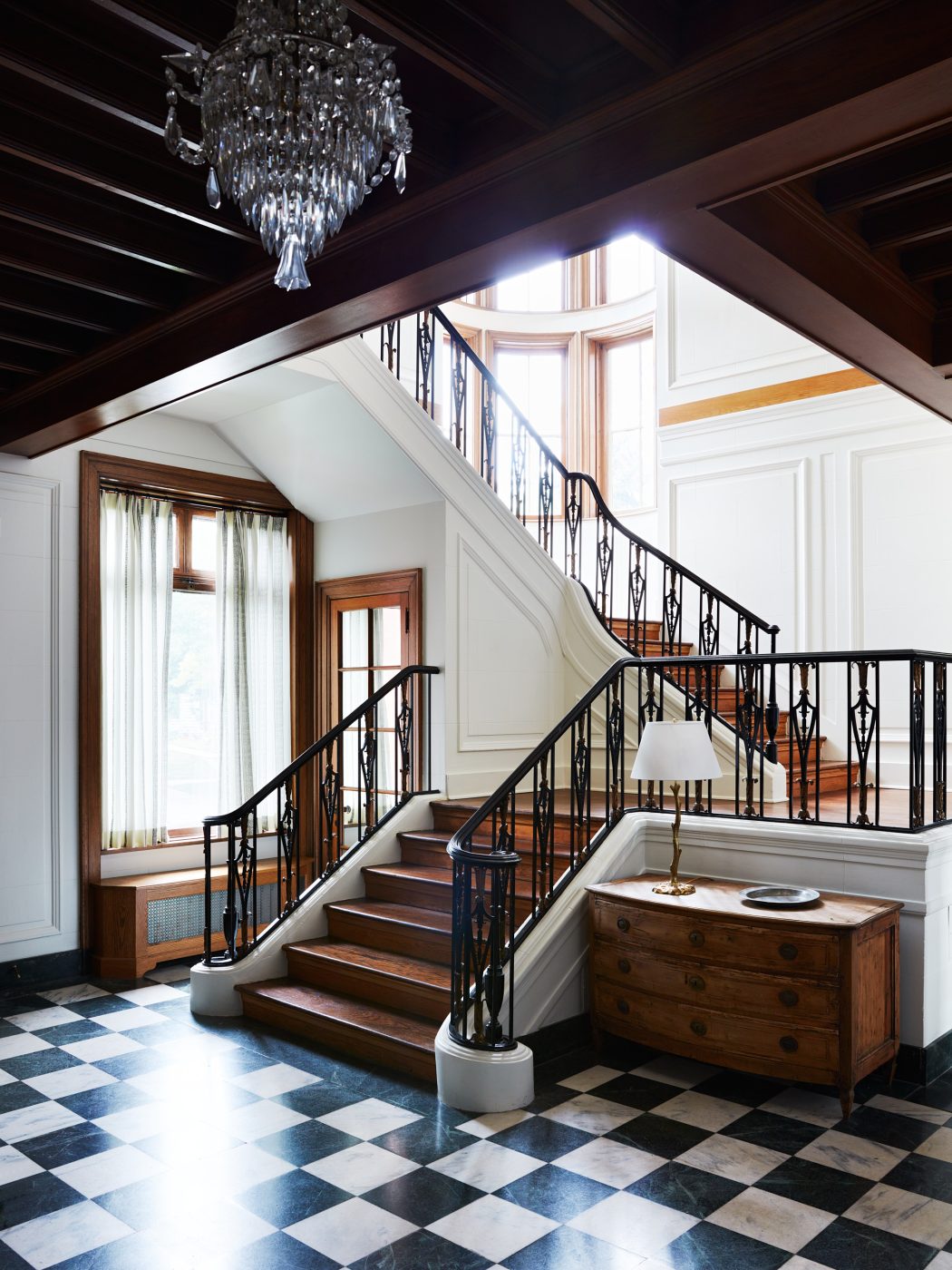
Like those creative talents, McDonald avoids reiterating a signature look from project to project, instead tailoring an aesthetic to fit a specific home and its owners. In new-build houses, for instance, she has created interiors that juxtapose 1960s Brazilian chairs and 1950s Danish modern pieces with antiques and contemporary lighting.
For another commission, where she reimagined a classic 1920s Craftsman bungalow, she paired vintage rattan seating and a travertine postmodern table in an enclosed porch, placed a French perforated-metal magazine rack (in the vein of Mathieu Matégot) and a Hugh Acton free-edge coffee table in the living room and mixed a copper German pendant and Danish chairs found on 1stDibs with the client’s own pedestal dining table.
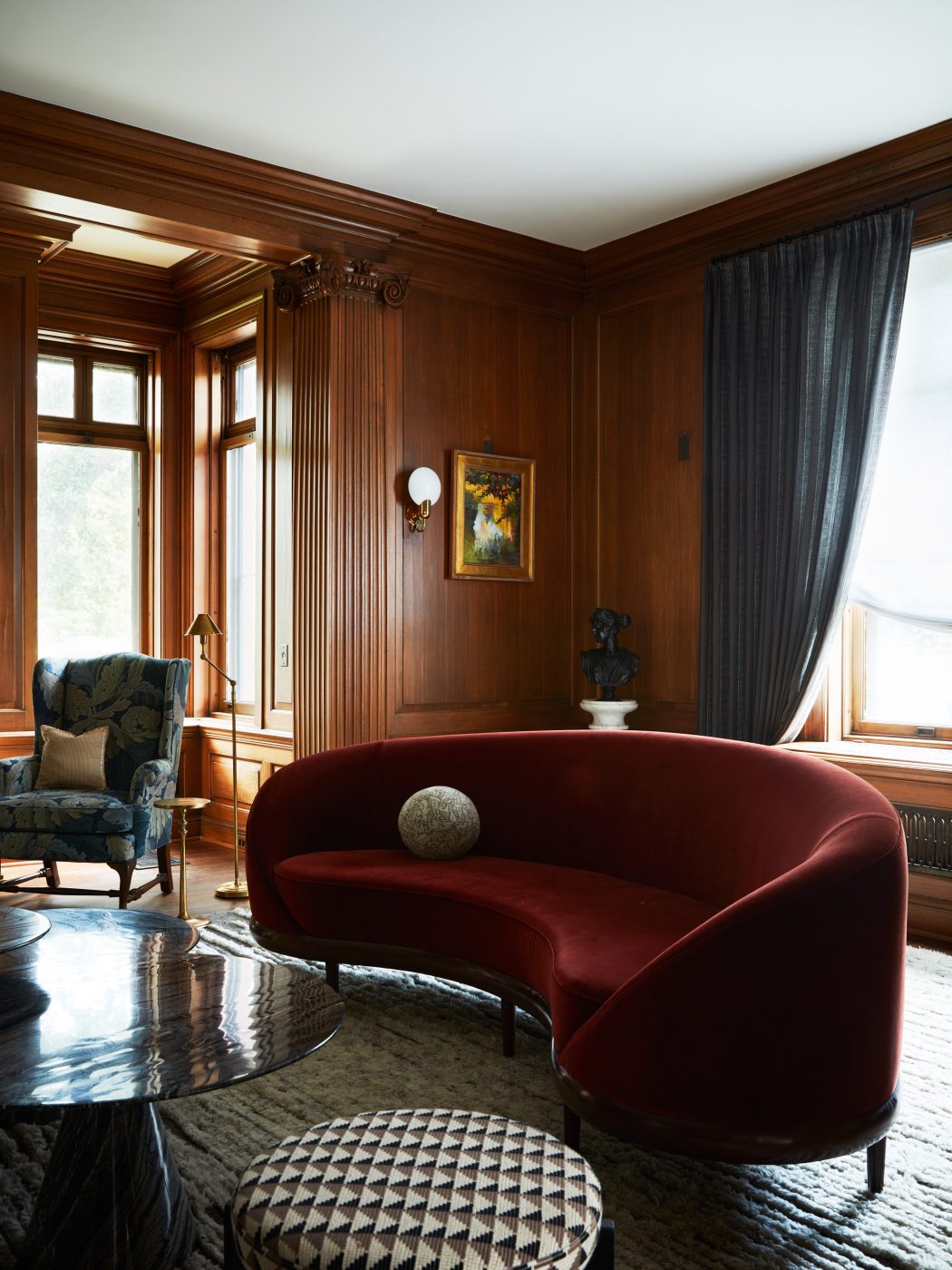
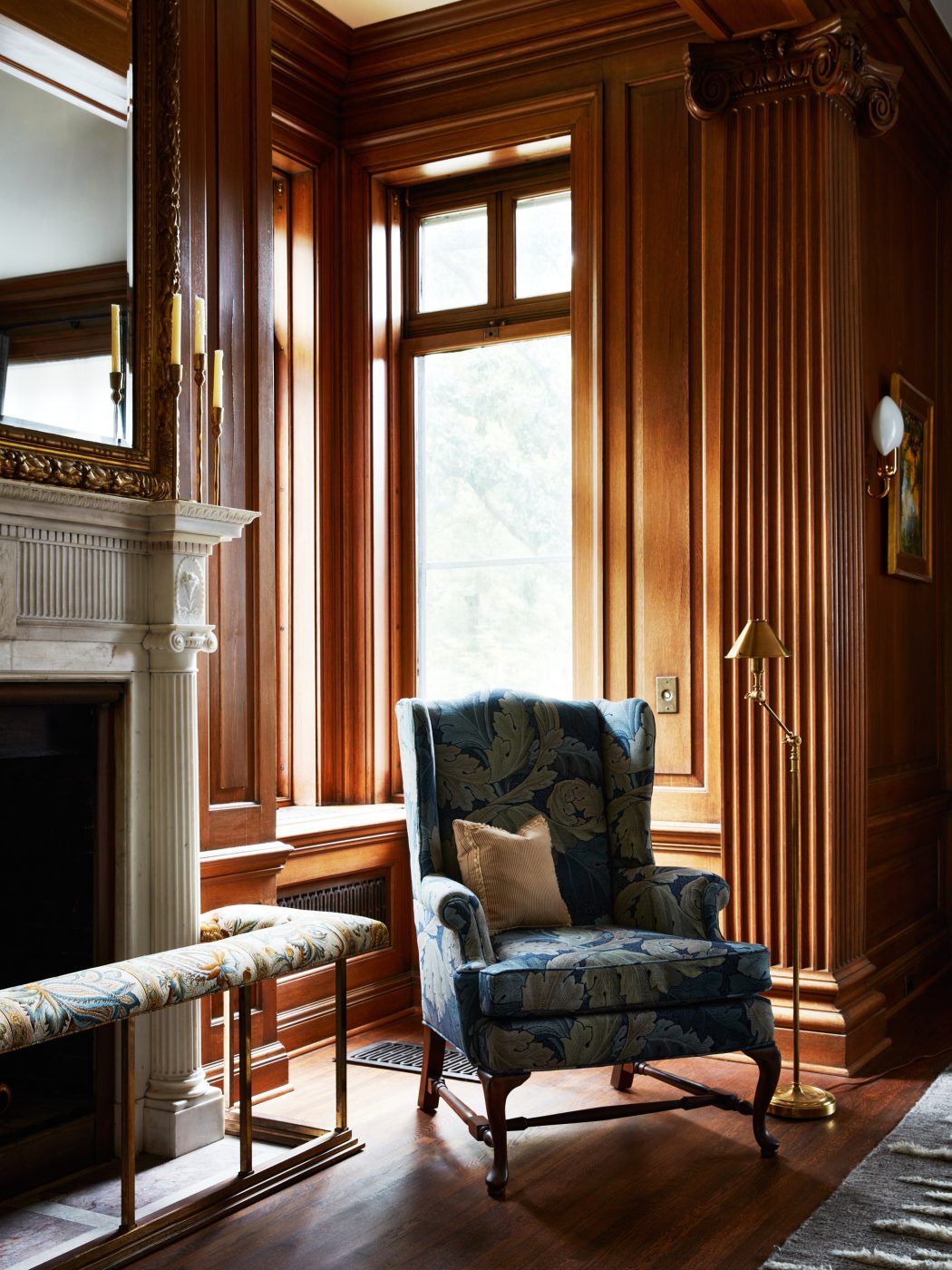
Whatever the architecture, her work always exudes comfort and understated luxury while simultaneously conjuring a strong sense of place.
McDonald grew up outside Minneapolis in a cedar-sided country house designed by her artist father, who ran a successful home-building company. As a teen, she gravitated to his job sites, “doing grunt work and looking at architecture through the lens of execution.”
After chasing dreams of being a professional snowboarder and surfer, and earning a BA in Chicano and Latin American studies from the University of Minnesota, she took interior design classes and then went to work at her father’s firm, focusing on cabinetry, kitchens and baths. After 10 years there, McDonald struck out on her own, taking on home renovations and decorating projects for friends.
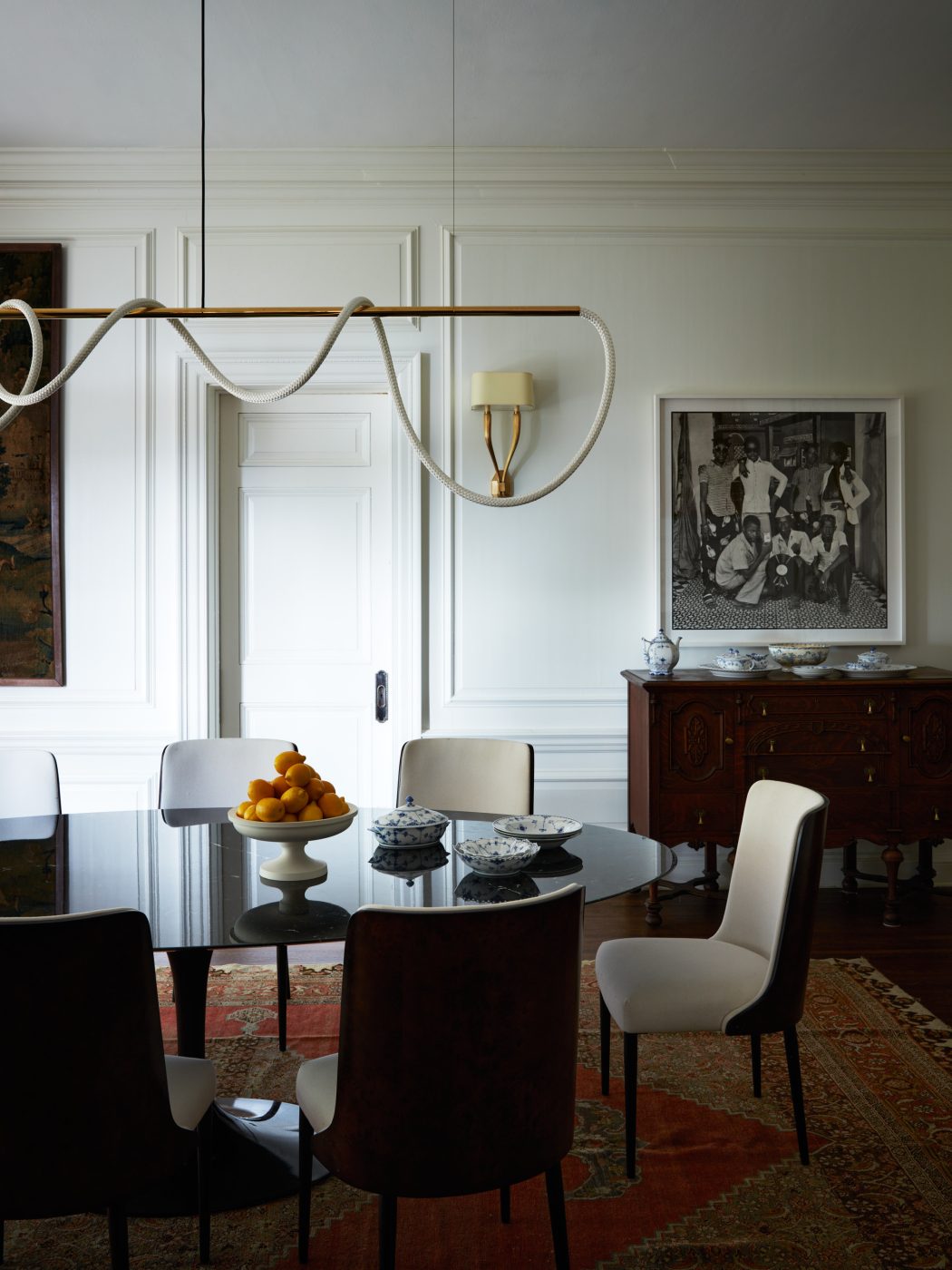
“Furniture was totally brand-new to me,” she admits. “I knew that I loved vintage and antique, but I didn’t know enough about it. So, 1stDibs was my home base for learning.”
Tackling the 10,000-square-foot Romanesque Victorian for a couple with two young children required a keen eye for both interior architecture and decoration. Walking into the project, she recalls, “was a pinch-myself moment. To be able to nerd out on moldings, casework, flooring and fireplaces was really a dream.”
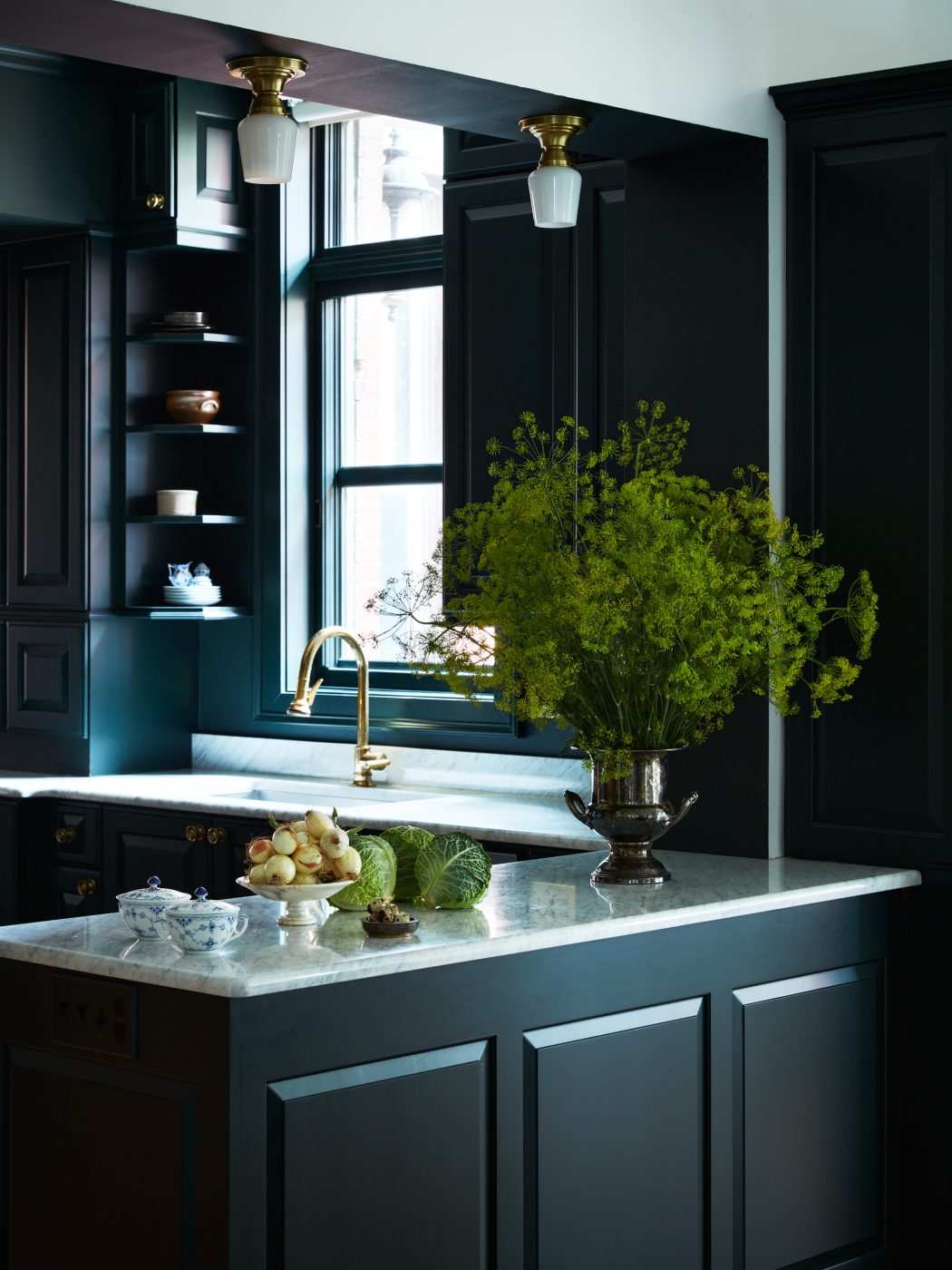

McDonald’s first order of business was awakening the front entry, which includes a grand winding staircase, from a nightmare of sponge-painted walls and a rainbow-colored ceiling medallion. “I needed to draw your eyes to the architecture,” she says of her decision to whitewash much of the space and limit furnishings to a 19th-century French commode and original antique crystal chandeliers.
In the wood-paneled living room, she introduced color with ruby, champagne and aquamarine tones and contrasted contemporary marble nesting tables and her own upholstery designs with traditional elements like an antique notched gilded mirror over the fireplace, a fender covered in Pierre Frey fabric and an heirloom wing chair clad in a William Morris pattern.

“There was such a strong masculine order to the architecture, so it was important to bring in curvy lines,” she explains. “I designed round ottomans with overscale fin-shaped legs reminiscent of the work of Jean Prouvé and swiveling club chairs that were a less bulky take on Art Deco.”
In the dining room, an antique burled-walnut sideboard with Victorian Eastlake detailing and a vintage rug nod to the history of the house. The black marble Eero Saarinen dining table, illuminated by a looping light fixture, creates an airy effect. The kitchen, for its part, “had a good layout but just needed marble countertops and dark paint” — Farrow & Ball Studio Green — “to become an elegant, anchoring home base.”
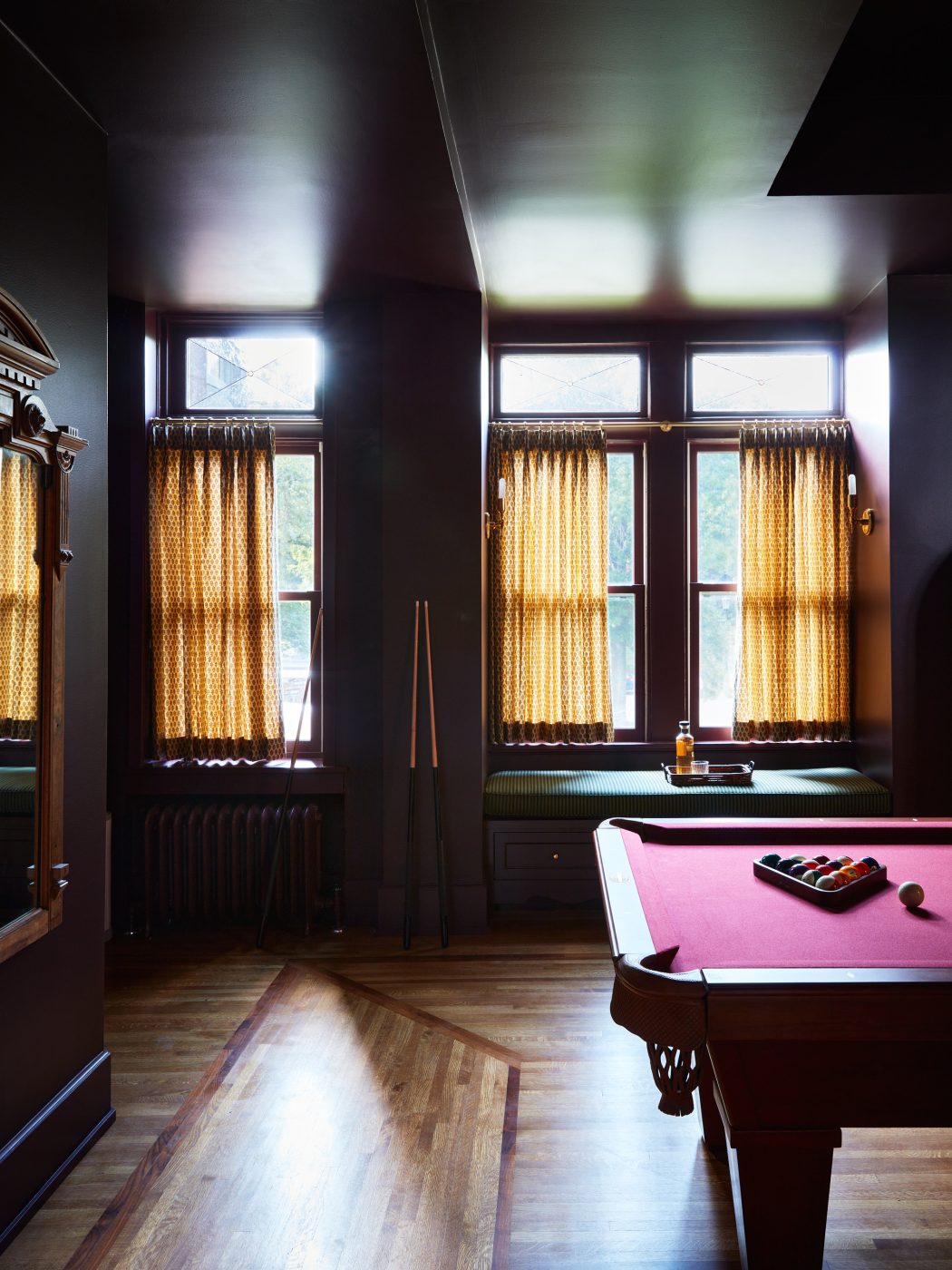
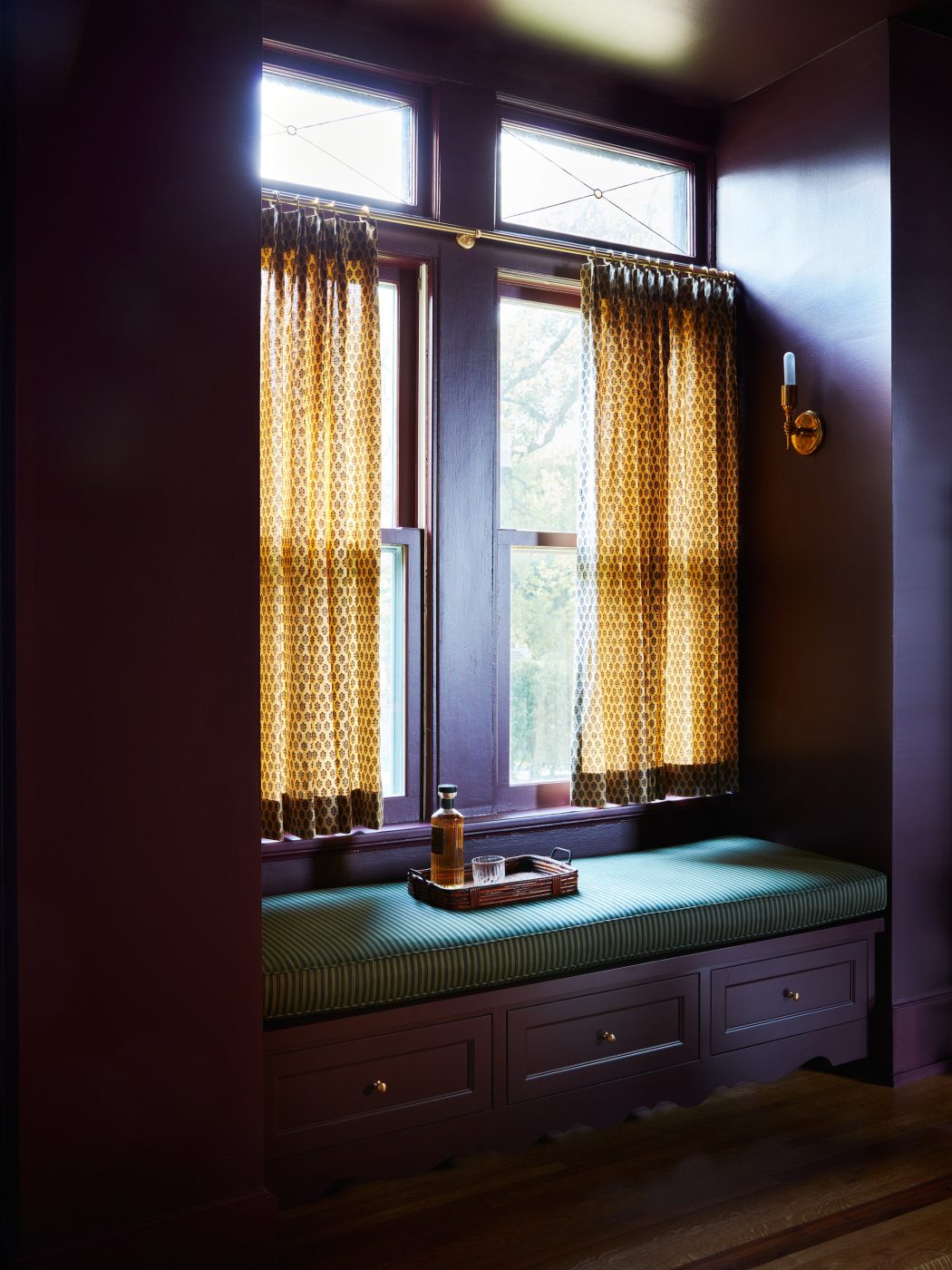
McDonald took a similar approach, employing a dark paint color, in a billiard room whose abundant storage cabinetry and position next to the garage allow it to do double duty as a mud room. She painted the space a rich eggplant and added green window seats for a look that recalls the mid-century Los Angeles home of writer Anaïs Nin.
In the powder room, she used a midnight blue with a Roman Clay finish on the walls, and next to a corner sink and Apparatus sconce, she hung a Tramp art mirror sourced from 1stDibs.
Tucked behind enormous etched-glass trifold doors, the potted-plant-filled conservatory — a common feature of Victorian homes — has its own period agenda, with original floors in a green-and-white marble checkerboard. A glass-topped marble table by Baker and a quartet of teak Dutch colonial chairs with diamond-pattern cane backs make an ideal setting for informal family meals and quiet moments of reading, the walls’ pale emerald hue evoking a spring-like atmosphere during Minnesota’s long, dark winters.
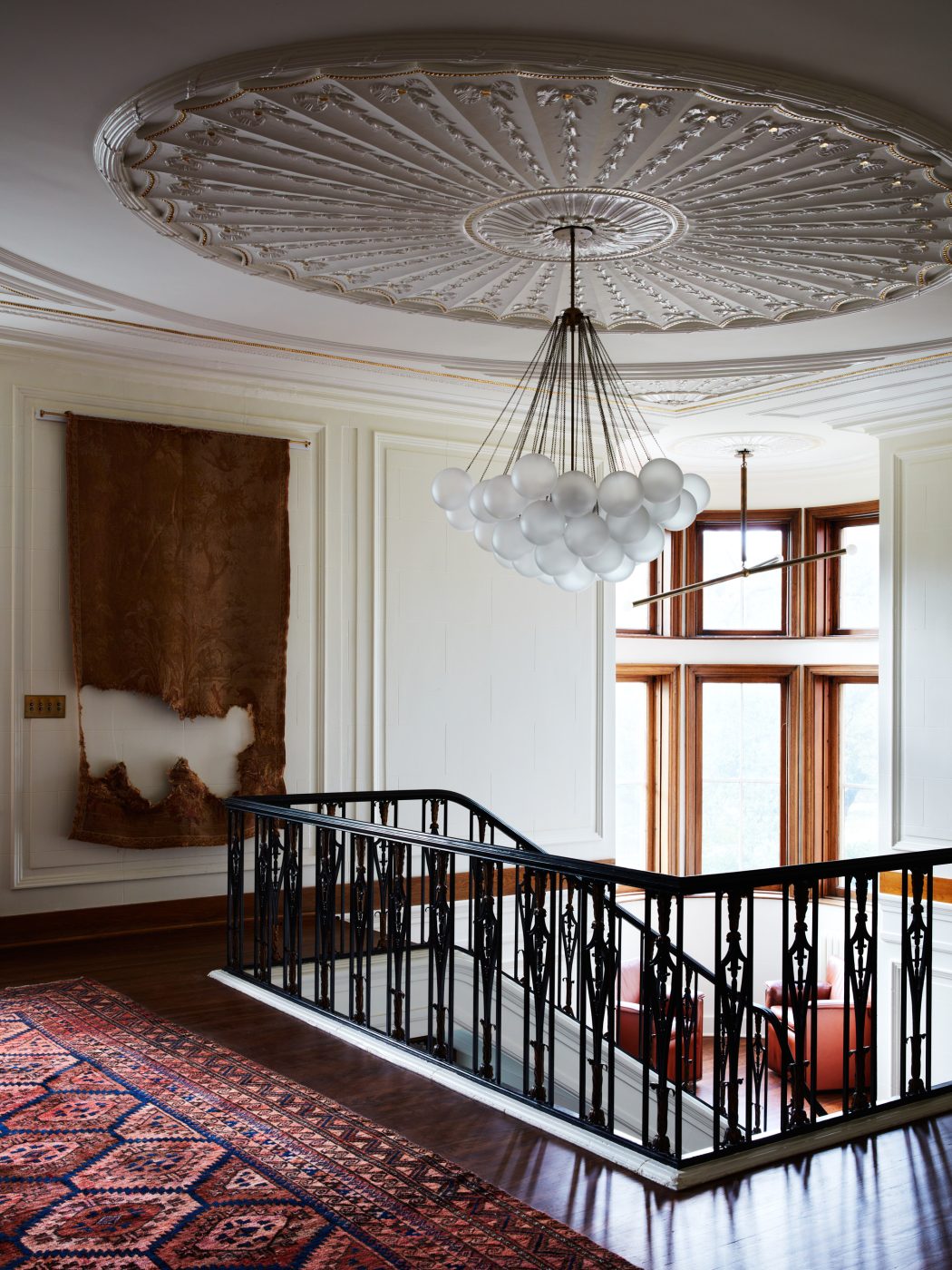
“I use a lot of green and blush,” McDonald says of her paint palette, noting that in the family room, “the blush walls and Roman shades are like a hug that takes your blood pressure down and makes everyone look good.” The color sets the stage for a bold mix of periods, styles and materials: a custom sectional covered in a Lee Jofa velvet, a vintage French patinated-iron table, a Pierre Jeanneret 053 Capitol Complex armchair by Cassina and a chunky mid-century coffee table in red oak perched on a goat-hair Turkish rug.
Even the smallest spaces in this house provided opportunities for drama. On the first landing of the staircase, McDonald created a striking vignette with a pair of Lauriana chairs, a 1978 design by Afra and Tobia Scarpa; and Yiannis Ghikas’s 2020 glass Soda table for Miniforms. At the top of the stairs, an Apparatus chandelier dangles dozens of glass globes from a massive original-to-the-house ceiling medallion with gilt accents. “On a nearby wall, we placed a beautiful antique French tapestry that had one big issue: It was disintegrating, but so elegantly,” McDonald says. “In that setting, it feels like a very contemporary and organic way of honoring the past, flaws and all. And it’s lovely how the missing chunks echo the shape of the light fixture above it.”
Down the hall, the primary bedroom features a headboard reupholstered in a textile with an Indian and Victorian feel, vintage bed linens and a pink marble lamp on a contemporary nightstand with a Danish modern look. “There’s something really honest and masculine about it,” she says of the bedside piece. “If a couple’s bedroom is too feminine, it feels syrupy to me.”
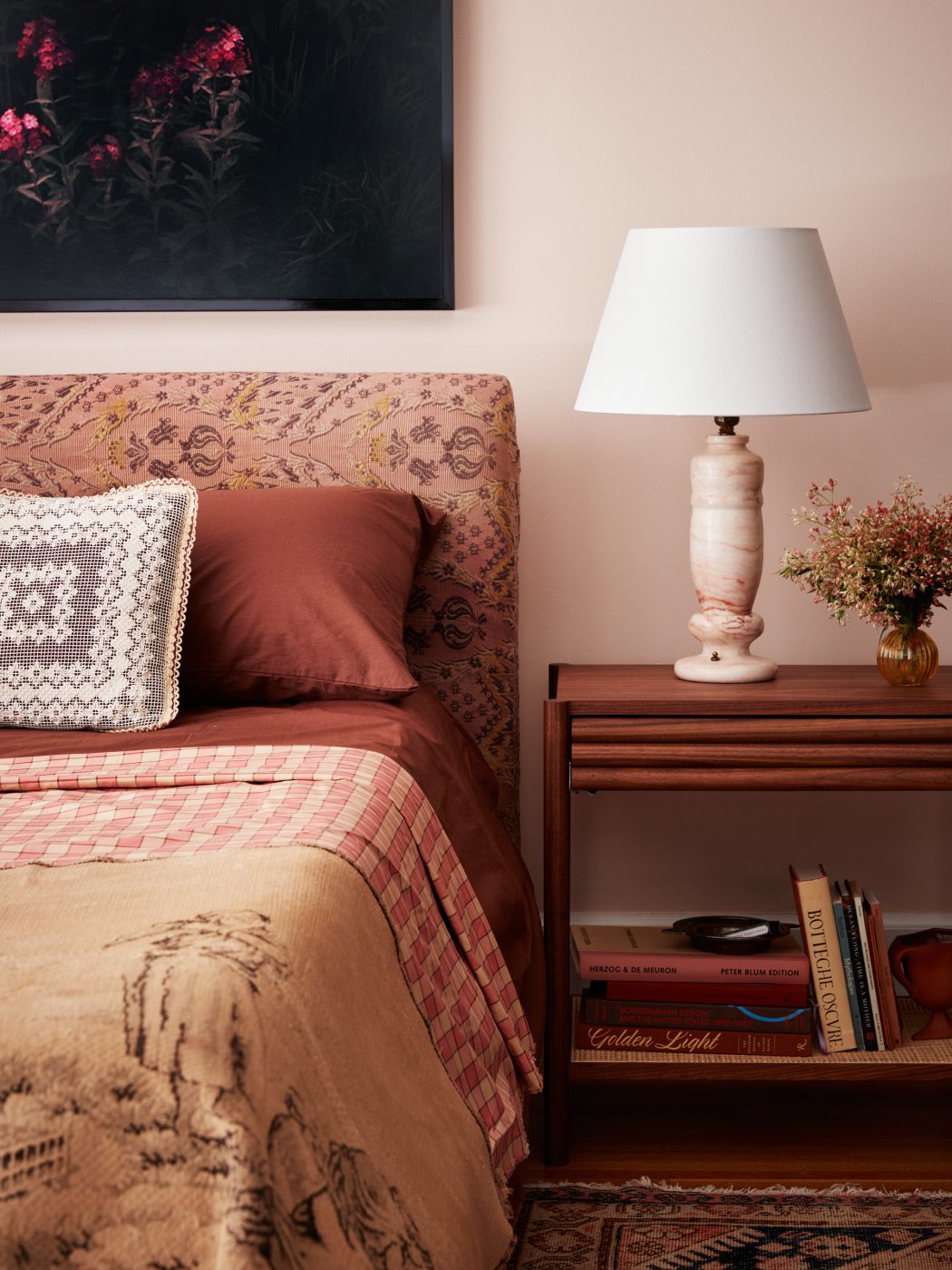
For McDonald, bringing this late-19th-century grande dame of a house into the mid-2020s was a process of finding the right mixture of tension and harmony, approachability and edginess.
“My formula is anti-formula. I start with fresh eyes every time,” she says. “Here, there are the anchors of the architecture and white space. But then, we added color and elements that felt historic, but not necessarily of the house’s original era — like contemporary lighting and mid-century designs by Saarinen and Jeanneret. I can definitely say this old house has never seen anything like it.”
